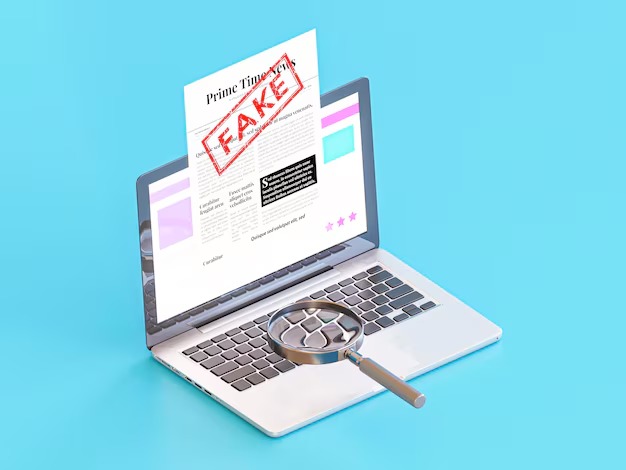How do Lawyers Negotiate Settlements
When it comes to resolving legal disputes outside of a courtroom, negotiating settlements is an essential skill for any lawyer. Successful negotiations can save clients time, money, and the stress of a lengthy trial. However, reaching a fair settlement requires careful preparation, effective communication, and a deep understanding of the law.
Preparation is key when entering into negotiations. Before sitting down at the table, lawyers must thoroughly analyze the case, gather all relevant evidence, and identify potential strengths and weaknesses. By knowing the facts and legal principles inside out, attorneys can present a strong argument and anticipate potential counterarguments from the opposing side.
Effective communication is paramount during negotiations. Lawyers must listen actively to understand the interests and concerns of both their client and the opposing party. By empathizing with the other side’s perspective, attorneys can foster a more cooperative atmosphere and find common ground. Additionally, lawyers should articulate their client’s position clearly and persuasively, using compelling arguments backed by solid legal reasoning.
Strategizing each step of the negotiation process is crucial. Lawyers should evaluate different settlement options and assess their potential risks and benefits. This involves considering the best alternatives to a negotiated agreement (BATNA) and the zone of possible agreement (ZOPA). By strategically positioning their client’s interests and objectives, lawyers can maximize the likelihood of achieving a favorable outcome.
In conclusion, negotiating settlements is a vital skill that all lawyers must possess. It requires meticulous preparation, effective communication, and strategic thinking. By approaching negotiations with a well-prepared strategy and a persuasive argument, lawyers can help their clients secure fair and favorable settlements while avoiding the costs and uncertainties of going to trial.
Preparation and Analysis
Before entering into any negotiation, it is essential for a lawyer to thoroughly prepare and analyze the case. This involves gathering all relevant information, reviewing documentation, and identifying the strengths and weaknesses of both parties’ arguments.
First and foremost, the lawyer must familiarize themselves with the facts of the case. This includes gathering all relevant documents, such as contracts, invoices, and any correspondence relating to the dispute. It is crucial to have a thorough understanding of the case and all the relevant details.
Once all the information has been collected, the lawyer must analyze the strengths and weaknesses of the case. This involves identifying any legal or factual issues that may impact the outcome of the negotiation. For example, if there are potential legal arguments that could weaken the opposing party’s position, the lawyer must be aware of them and be prepared to use them during the negotiation.
Additionally, the lawyer should assess the potential risks and potential rewards associated with the negotiation. They should consider the costs of litigating the case versus the potential benefits of reaching a settlement. This analysis will help the lawyer determine their negotiating strategy and the goals they wish to achieve.
Furthermore, it is important to consider the parties involved in the negotiation. Understanding the motivations, interests, and priorities of the opposing party can help the lawyer tailor their approach and identify potential areas of compromise.
Overall, thorough preparation and analysis are essential for a lawyer to effectively negotiate a settlement. By gathering all relevant information, analyzing the strengths and weaknesses of the case, and understanding the parties involved, a lawyer can develop a successful negotiation strategy that maximizes the chances of reaching a favorable settlement.
Setting Clear Objectives
Before entering into any negotiation, it is crucial for lawyers to set clear objectives. Having clearly defined goals can help guide the negotiation process and increase the chances of reaching a favorable settlement.
When setting objectives, it is important to consider both the short-term and long-term goals of the client. Short-term goals may include obtaining a specific monetary amount or a specific concession from the other party. Long-term goals may include preserving the client’s reputation or minimizing future litigation risks.
To set clear objectives, lawyers should gather all relevant information about the case. This includes understanding the strengths and weaknesses of the client’s position, as well as any information about the other party’s position and interests. By analyzing this information, lawyers can identify the key issues that need to be addressed during the negotiation.
Once the objectives have been identified, lawyers should prioritize them based on their importance to the client. This will help guide the negotiation process and prevent unnecessary disputes over less important issues.
It is also important to communicate the objectives clearly to the other party. This can be done through a well-prepared opening statement or by clearly stating the objectives during the negotiation process. Clear communication of objectives helps manage expectations and facilitates a more productive negotiation.
- Identify short-term and long-term goals
- Gather all relevant information about the case
- Analyze the information to identify key issues
- Prioritize objectives based on importance
- Clearly communicate objectives to the other party
In conclusion, setting clear objectives is a critical step in negotiating settlements. By clearly defining goals, lawyers can effectively guide the negotiation process and increase the chances of achieving a favorable outcome for their clients.
Gathering Evidence and Documentation
Gathering evidence and documentation is a crucial part of negotiating settlements as a lawyer. The information you gather will serve as the basis for your arguments and can greatly impact the outcome of the settlement. It is important to gather as much relevant evidence and documentation as possible to support your client’s position and strengthen your negotiating stance.
Identify Key Facts and Issues
Before gathering evidence, it is essential to identify the key facts and issues related to the settlement. Review the relevant legal documents and any correspondence or communications related to the case. This will help you understand your client’s position and determine which evidence and documentation will be most valuable in supporting your arguments.
Collect Supporting Evidence
Once you have identified the key facts and issues, it is time to collect supporting evidence. This can include witness statements, expert opinions, photographs, videos, documents, and any other relevant information. It is important to ensure that the evidence you gather is admissible and relevant to the case.
Interview witnesses and obtain signed statements that document their observations and any relevant facts. Consider seeking expert opinions in cases that require specialized knowledge. Collect any physical evidence that may be relevant, such as photographs, videos, or documents that support your client’s position.
Additionally, it is essential to keep a detailed record of all evidence collected, including where and how it was obtained. This record will help you organize and present your evidence effectively during negotiations and potentially in court, if the settlement is not reached.
Finally, make sure to document any efforts made to gather evidence that may have been unsuccessful. This shows your diligence and can help explain any gaps in the evidence presented during negotiations.
Gathering evidence and documentation is a critical step in negotiating settlements as a lawyer. Taking the time to thoroughly collect and organize relevant evidence can strengthen your negotiating position and improve the chances of reaching a favorable settlement for your client.
Creating a Strong Case Narrative
When negotiating settlements, a strong case narrative is essential to effectively communicate your position and persuade the opposing party to reach a favorable agreement. A well-crafted case narrative can help you present the facts, legal arguments, and key supporting evidence in a compelling and logical manner. Here are some tips and strategies for creating a strong case narrative:
- Gather and organize relevant information: Start by gathering all relevant information related to your case, including documents, witness statements, expert opinions, and any other evidence. Organize this information in a logical and easily accessible manner, so that you can easily reference it when constructing your case narrative.
- Clearly state the facts: Begin your case narrative by clearly stating the facts of the case. This should include a concise summary of what happened, who was involved, and when and where the events occurred. Be objective and stick to the facts without embellishment or exaggeration.
- Identify the legal issues: Once the facts are established, identify the legal issues at hand. Clearly state the legal elements that need to be proven and explain how they apply to your case. This will help the opposing party understand the legal basis of your claims.
- Present supporting evidence: Provide supporting evidence for each of your legal arguments. This can include documents, photographs, expert reports, or witness testimonies. Make sure to explain the relevance and reliability of each piece of evidence to strengthen your case.
- Address counterarguments: Anticipate potential counterarguments or weaknesses in your case and address them proactively in your narrative. Refute opposing points and provide strong counterarguments backed by evidence or legal principles.
- Use clear and persuasive language: Write your case narrative in a clear and persuasive manner. Use concise sentences, avoid jargon, and explain complex legal concepts in simple terms. The use of strong and persuasive language can help you convey the strength of your arguments.
- Structure your narrative: Organize your narrative in a logical structure, with clear headings and subheadings. This will make it easier for the opposing party to follow your arguments and understand the flow of your case. Use paragraphs and bullet points to break down complex information and make it more digestible.
- Keep it concise: While it’s important to provide all necessary information, it’s equally important to keep your case narrative concise. Avoid unnecessary repetition and focus on including only relevant and impactful information. A concise narrative is more likely to hold the attention of the opposing party.
- Proofread and edit: Before finalizing your case narrative, thoroughly proofread and edit it to ensure clarity, coherence, and accuracy. Check for any grammatical or typographical errors that may undermine the professionalism and credibility of your narrative.
By creating a strong case narrative, you can effectively present your position, strengthen your arguments, and increase your chances of negotiating a favorable settlement. A well-constructed narrative shows your preparedness and command of the facts, which can have a significant impact on the outcome of the negotiations.
Building Relationships with Opposing Parties
When it comes to negotiating settlements, building relationships with opposing parties can be advantageous for a lawyer. While it is natural to see the other side as the enemy, developing a rapport can lead to better outcomes for both parties involved. Here are some strategies for building relationships with opposing parties:
- Establish Common Ground:Look for areas of agreement or shared interests to establish a foundation for the relationship. This can help create a sense of camaraderie and make the negotiations feel less adversarial.
- Practice Active Listening:Paying attention to the other party’s concerns and needs demonstrates respect and can help uncover opportunities for compromise. Listening carefully also helps to identify possible solutions that may not have been initially apparent.
- Show Empathy:Acknowledge the other party’s perspective and demonstrate understanding of their position. By showing empathy, you can create a more open and cooperative environment for negotiation.
- Be Professional and Respectful:It is essential to maintain a professional demeanor throughout the negotiation process. Avoid personal attacks or aggression, as this can hinder progress and damage the relationship.
- Communicate Clearly and Concisely:Use clear and direct language to convey your position and objectives. Avoid jargon or overly complex explanations that may confuse or alienate the other party.
- Collaborate and Problem-Solve Together:Instead of viewing the negotiation process as a win-lose situation, aim for a win-win outcome. Collaborate with the other party to find creative solutions that meet both parties’ needs and address underlying interests.
- Follow Through on Agreements:Once an agreement is reached, make sure to follow through on any commitments or promises made during the negotiation process. This helps to establish trust and credibility with the opposing party.
Building relationships with opposing parties can take time and effort, but it can ultimately lead to more favorable settlements and improved working relationships. By approaching negotiations with a mindset of cooperation and respect, lawyers can increase the chances of reaching mutually beneficial outcomes.
Effective Communication and Listening Skills
Effective communication and listening skills play a crucial role in negotiating settlements as a lawyer. These skills not only help in understanding the other party’s perspective but also in conveying your own viewpoint effectively. Here are some tips and strategies to improve your communication and listening skills:
| 1. Active Listening |
| Listening actively involves giving your full attention to the speaker and understanding their words, tone, and body language. Avoid interrupting and show empathy towards their concerns. This will help you grasp the full context of the discussion. |
| 2. Clarification |
| When you don’t understand something, don’t hesitate to ask for clarification. This will prevent any misunderstandings and ensure that both parties are on the same page. |
| 3. Non-verbal Communication |
| Pay attention to your own non-verbal communication, such as facial expressions and body posture. Also, observe the other person’s non-verbal cues to gain a deeper understanding of their emotions and intentions. |
| 4. Use Clear and Concise Language |
| Avoid using jargon or complex legal terms that may confuse the other party. Instead, use simple and precise language to articulate your points clearly. |
| 5. Empathy and Understanding |
| Show empathy towards the other party’s perspective and try to understand their underlying interests and motivations. This will help you find common ground and reach a mutually beneficial agreement. |
| 6. Stay Calm and Composed |
| Managing your emotions is crucial during negotiations. Stay calm, composed, and in control of your words and actions. This will help maintain a constructive atmosphere and prevent misunderstandings. |
By honing your communication and listening skills, you can become a more effective negotiator and increase the chances of reaching a favorable settlement for your client.
Exploring Alternative Dispute Resolution Options
When engaging in settlement negotiations, it is important for lawyers to consider alternative dispute resolution options. These alternative methods of resolving disputes can offer a range of benefits, including cost savings, shorter resolution times, and improved confidentiality.
Mediation: Mediation involves a neutral third party, known as a mediator, who helps facilitate a resolution between the parties. The mediator does not make any decisions but encourages open communication and assists the parties in finding common ground. Mediation can be a less adversarial process and offers more control and flexibility to the parties involved.
Arbitration: Arbitration is a more formal process than mediation, where a neutral third party, known as an arbitrator, hears evidence and makes a binding decision. Arbitration can be a faster and more cost-effective option than litigation, as it avoids lengthy court procedures. However, it is important to carefully review arbitration clauses in contracts, as they may limit a party’s ability to seek remedies in court.
Negotiation: While not strictly considered an alternative dispute resolution method, negotiation is often the first step in resolving a dispute. It involves parties discussing their positions and attempting to reach a mutually satisfactory agreement. Negotiation can occur directly between the parties or with the assistance of their lawyers.
Collaborative law: In collaborative law, each party is represented by their lawyer, and the lawyers work together to facilitate a resolution. The parties agree not to go to court and commit to resolving their dispute through negotiation. Collaborative law can be particularly useful in family law cases or disputes where ongoing relationships are important.
Mini-trials: Mini-trials involve a shortened version of a trial, where the parties present their case to an impartial third party. The third party then provides a non-binding evaluation of the strengths and weaknesses of each party’s position. This can help the parties evaluate their positions and potentially facilitate a settlement.
Summary jury trials: Summary jury trials are similar to mini-trials but involve a jury instead of an impartial third party. The jury provides feedback on the strengths and weaknesses of each party’s case, but their decision is not binding. Summary jury trials can be helpful in evaluating the likely outcome of a case before proceeding to a full trial.
When considering alternative dispute resolution options, it is important for lawyers to weigh the advantages and disadvantages of each method, as well as the specific circumstances of the case. By exploring these options, lawyers can help their clients achieve a favorable settlement in a timely and cost-effective manner.
Finalizing and Enforcing Settlement Agreements
Once a settlement agreement has been reached between the parties involved in a legal dispute, it is important to take the necessary steps to finalize and enforce the agreement. This ensures that both parties are bound by the terms and conditions outlined in the settlement and that the agreed-upon resolution is upheld.
1. Documenting the Settlement
The first step in finalizing a settlement agreement is to document all the details of the agreement in writing. This typically involves drafting a settlement agreement that clearly outlines the terms and conditions agreed upon by both parties.
The settlement agreement should include information such as the names of the parties involved, a clear description of the dispute being settled, the agreed-upon resolution, any financial obligations or payments, and the timeline for fulfilling the terms of the settlement. It is also advisable to include a confidentiality clause to protect sensitive information shared during the negotiation process.
Both parties should carefully review the settlement agreement and seek legal counsel if necessary to ensure that their rights and interests are adequately protected. Once any necessary revisions have been made, the parties can proceed to sign the agreement.
2. Enforcing the Settlement
Once the settlement agreement has been signed, it is crucial to take the necessary steps to enforce its terms. This typically involves filing the settlement agreement with the appropriate court or administrative body governing the dispute. By doing so, the settlement agreement becomes a legally binding document that can be enforced if one party fails to fulfill their obligations.
If one party fails to comply with the terms of the settlement agreement, the other party can seek legal remedies to enforce the agreement. This may involve filing a motion for enforcement with the court, requesting specific performance of the agreed-upon actions, or seeking damages for any losses incurred as a result of the other party’s non-compliance.
In some cases, it may be necessary to engage in additional negotiations or mediations to resolve any disputes that arise during the enforcement process. It is important for both parties to approach the enforcement process in good faith and be willing to work towards a resolution that upholds the terms of the original settlement agreement.
Overall, finalizing and enforcing a settlement agreement is a critical part of the negotiation process. By documenting the agreement in writing and taking the necessary steps to enforce its terms, both parties can ensure that the resolution they have reached is upheld and that their rights and interests are protected.
Question and answer: How do lawyers negotiate settlements
What role does a personal injury lawyer play in handling a personal injury case?
A personal injury lawyer provides legal representation to individuals who have been injured due to someone else’s negligence, helping them to secure compensation for their injuries, including medical bills, lost wages, and pain and suffering.
How do insurance companies impact the settlement amount in a personal injury claim?
Insurance companies often aim to minimize the settlement amount paid out in a personal injury claim, which is why having an experienced personal injury attorney is crucial to negotiate a fair compensation.
What is the importance of a demand letter in a personal injury lawsuit?
A demand letter is a critical document in a personal injury lawsuit that outlines the injuries, the medical treatment received, and the compensation sought, serving as a formal request for settlement negotiations.
How do personal injury lawyers negotiate settlements with insurance companies?
Personal injury lawyers negotiate settlements by presenting evidence of the claimant’s injuries, medical expenses, and other losses to argue for a higher settlement offer from the insurance adjuster.
What factors contribute to the calculation of a settlement offer in a personal injury case?
The settlement offer in a personal injury case considers medical expenses, lost wages, pain and suffering, and future medical needs, aiming to compensate the injured party fully.
Can you explain the settlement negotiation process in personal injury cases?
The settlement negotiation process involves the injured party’s lawyer and the party’s insurance company discussing the case details to reach an agreement on the settlement amount, often requiring several rounds of negotiation.
What are the advantages of hiring an experienced personal injury attorney for an injury lawsuit?
Hiring an experienced personal injury attorney can lead to a higher settlement amount, as they have the expertise to navigate the legal system, negotiate with insurance companies, and if necessary, take the case to trial.
How do medical malpractice claims fit within the scope of personal injury law?
Medical malpractice claims are a type of personal injury lawsuit where the injured party seeks compensation due to negligence by a healthcare provider, involving legal evaluation of medical treatment and outcomes.
What steps should be taken to file a personal injury claim after an accident?
To file a personal injury claim, one should seek medical treatment, document injuries and damages, obtain a police report if applicable, and consult with a personal injury lawyer for a free case evaluation.
Why is it important to understand the policy limit in insurance policies when negotiating a personal injury settlement?
Understanding the policy limit in insurance policies is crucial because it sets the maximum amount the insurance company will pay out, which guides the negotiation strategy for achieving the highest possible settlement within those limits.
How can a law firm assist you in the event of a personal injury?
A law firm can provide you with an experienced attorney who specializes in personal injury cases, offering legal advice, representing your interests in negotiations with insurance companies, and guiding you through the litigation process to secure compensation for your injuries.
What is the benefit of a free consultation with a personal injury lawyer?
A free consultation offers you the opportunity to discuss your case with an experienced lawyer, understand your legal options, and determine the best course of action without any financial obligation.
When is it necessary to file a lawsuit in a personal injury case?
Filing a lawsuit becomes necessary when negotiations with the insurance company fail to result in a fair settlement or if the statute of limitations is nearing, requiring legal action to pursue the desired settlement amount.
Can you describe the settlement process in personal injury cases?
The settlement process involves several steps, including filing a claim, gathering evidence, negotiating with the insurance company, and, if necessary, going to trial. An experienced attorney can guide you through each step to ensure you receive the settlement you deserve.
How do settlements in personal injury cases typically compare to the initial offer from insurance companies?
Settlements in personal injury cases often exceed the initial offer from insurance companies, as experienced lawyers negotiate to ensure the compensation covers both economic and non-economic damages adequately.
Why is it important to have an attorney on your side when you negotiate with the insurance company?
Having an attorney on your side is crucial because they have the expertise to negotiate effectively, counter lowball offers, and advocate for a higher settlement that accurately reflects the extent of your injuries and losses.
How do legal fees work in personal injury cases?
Most personal injury lawyers work on a contingency fee basis, meaning they only receive payment if they successfully secure a settlement or verdict in your favor, with their fee being a percentage of the settlement amount.
How does an attorney determine the settlement value in a personal injury case?
An attorney determines the settlement value by considering medical expenses, lost wages, future medical expenses, pain and suffering, and other impacts on your life, aiming to negotiate a settlement that fully compensates for your injuries.
What is involved in the negotiating process with insurance companies in personal injury cases?
The negotiating process involves the injured party’s attorney presenting a settlement demand that details the compensation needed, followed by back-and-forth negotiations with the insurance company to reach an agreement on a fair settlement.
How long does the negotiation timeline typically take in a personal injury case?
The negotiation timeline can vary widely, from a few weeks to several months or more, depending on the complexity of the case, the amount of evidence, the willingness of the insurance company to negotiate, and the efficiency of the legal representation.






